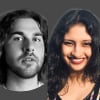
Should brands be doing more to help consumers ditch the doom scroll?
With increasing attention on the negative impact of social media on consumers’ mental health, a growing number of brands are advocating for IRL connection.

Marketing leaders consider how cancel culture is impacting creativity

65% of marketers are afraid of ‘getting it wrong’ according to research from the Unstereotype Alliance. While creativity has long adopted the language of bravery, the uncomfortable truth is no matter how many ‘feel the fear and do it anyway’ posters we put up in our offices, as organisations and individuals we are afraid.
According to Creative Equals, in many parts of the industry Diversity, Equity and Inclusion programmes are being deprioritised. Teams have been cut entirely or scaled back. The divisive media coverage surrounding the backlash to Bud Light’s social post with Dylan Mulvaney has been weaponised by those with an agenda to promote a surface-level ‘go woke go broke’ media narrative.
With this in mind, we asked industry leaders to look beyond the surface and consider if that fear of ‘getting it wrong’ is holding brands back creatively.

Creativity loves constraints.
Yeah, sure, the DEI discussion can often be fraught with pitfalls. We are, after all, talking about how people see themselves and their place in the world. It's important we get it right.
But this is exactly the sort of nuanced space in which creativity thrives. Where the subjective and the nuanced matter; where the machine can't overwhelm the human; where each person has their own read.
So for sure, DEI puts all sorts of new constraints on brands. To consider more perspectives. To vacate contested spaces that were previously benign. To navigate culture wars without becoming inauthentic, or accidental combatants in battles that aren't ours.
And yet, these constraints and considerations are not bad news for the creative process, far from it: it's exactly the sort of dynamic, human context in which creativity has the chance to really thrive, with new expressions, new forms and new ideas.

Brands have the ability to be creative by focusing on serving and delighting more and diverse consumers with superior brand experiences, based on unique insights and needs. For example, one important area of focus for P&G Europe is ad accessibility, so that people with vision and hearing loss can enjoy the stories and have access to information through audio description and the captioning of ads. But accessibility needs collective action – greater awareness, advertisers asking for it, media providers leveraging technology, and everyone working together to remove barriers when it comes to accessible advertising.

Creativity is under threat. Divisive debate exists around every issue, and high-profile controversies have sent ripples of caution and chaos throughout Adland. Many marketers are ‘playing it safe’, which risks undoing the DEI progress that the industry has made in recent years.
Other brands have identified the opportunity in society’s polarisation, sticking to their brand values in the face of controversy. Under these conditions, choosing to double down on progressive marketing commitments is the most brave and authentic thing a brand can do. An approach which feeds continued creativity rather than stifling it.
Creative bravery will always come with risk. Progressive brands should develop an appetite for risk and bake resilience into their comms process. To play the game, you must become a strong player. This means identifying where backlash derives from; who’s making the noise and why? Do the intentions behind the backlash align with the intentions of the brand? Deciphering between constructive and obstructive feedback requires sensitivity to nuanced conversations and their cultural contexts. To be a distinctive and relevant brand, choose to stand strong instead of retreating.
Ultimately, integrity is a brand’s greatest asset. To navigate today’s volatile media landscape, creativity can be used as a tool to combat backlash and ensure our integrity is uncompromised. Creativity is not the victim, it's the solution.

Frank Herbert said it best – “fear is the mindkiller”. For an industry that’s obsessed with bold, transformative work, the challenge of building cultural fluency for brands should excite us. However, amidst the vast array of impactful work, there seems to be an undue fixation on a few mishandled situations. If you look at the brands that are growing and the people who are doing transformative work that gets talked about, the singular thread between all of them is that they know their ethos and aren’t afraid to lean in to the social issues they’re uniquely positioned to back. If brands want to stay relevant in culture, they need to reflect culture. It’s really that simple.
And, I would argue the opposite of fear is curiosity. Confronting uncertainties with openness and inquiry rather than avoidance is how we solve the creativity crisis in advertising.
Looks like you need to create a Creativebrief account to perform this action.
Create account Sign inLooks like you need to create a Creativebrief account to perform this action.
Create account Sign in